I am a funny man in a very peculiar way.
I am odd, and whenever I am not odd, I am different. In fact, my singularity is such that, if the Gaussian distribution of humanity’s normality was the Himalayas, I’d be the guy standing on the beaches of Rodrigues [and boy, do I wish that was the case].
Now, this may come as no surprise to those who know me personally, but it nevertheless merits an explanation.
As a matter of fact, my oddity is not apparent, and if you spotted me at a public place I could well go undetected, blending in with all the Joe Plummers, the Joneses, and those who seek to keep up with them. It is not until I start talking about my approach to birding that I separate myself from all my fellow men and women, from all that were before me and will come after me. And even then, this isolation in attitude springs from one source only:
Gulls confuse me.
Yes, you will need a minute to catch your breath, or maybe a cleansing look at yet another colourful European bird. I shall provide and wait patiently for the return of your valued concentration …
[WARNING: The following image shows the bird in full colour, and it is therefore recommended for North American readers only, who – through a long process of natural selection – have adapted to colours on birds. European birders have not! For safety reasons, European readers are thus strongly advised to proceed to the second image immediately, which was taken with the camera’s PMFD (Protective Monochrome Filter Device) activated. Failure to do so may cause permanent retinal damage!]
A Whitethroat‘s colours are like a warm spring rain on a winter’s day – or something.
A Whitethroat’s shades of black, white, and everything in-between, are like something.
Now that you have returned, I may hope to explain my situation and beg your understanding. The confusion that clouds my mind whenever I think of gulls is based on two main aspects of their life history:
taxonomy & common names
Gull taxonomy is a field of profound confusion, and has been so for a very long time. Beyond this, it is a veritable battlefield as well. Indeed, gull taxonomy was at the heart of the American Revolution and was even the casus belli that sparked armed hostilities between the two opposing parties. It all started rather innocently, with the publication of a paper on gull taxonomy by Jefferson et al. (1776), in which the authors stated that they “hold these truths to be self-evident, that all gulls are created equal”. To this the British ornithologists objected, and to prove their point they sent a few ships of Hessian bird collectors with muskets and canister shot over the Atlantic. Misinterpreting their intentions, or stuck in their taxonomic ways (we will likely never know), the Americans raised their Continental Army and the rest – they say – is history.
Possibly as a result of this struggle for scientific independence, the New World was largely spared (initially, har har har – see below) from the taxonomic catastrophe and onslaught of reason that beset the European birding scene at the end of the 1980s and throughout the 1990s. Please, make sure your kids aren’t reading this, but of course I am speaking of no other group than the Large White-headed Gulls, or LWHG.
LWHGs, in this case a Herring Gull Larus argentatus, are vicious in ways defying comprehension. All I wanted was a nice picture of the beautiful reflection on the water, and look what I ended up with: a GULL had entered the middle of the frame, just so it could spoil everything!
The oldest of us may remember the golden age when these species were so little of an issue that the term LWHG didn’t even exist. There were essentially three species, Herring Gull (silver back), Lesser Black-backed Gull (dark grey back), and Greater Black-backed Gull (blackish back). As shown by the description of their back colouration, distinguishing between the adults was a piece of cake and the immatures were simply labeled “indeterminable” and no-one gave a … you know … second glance.
It seems probable that European birders have been impacted mentally by frequently having to tackle Acrocephalus and Phylloscopus warblers, and they therefore simply can’t stand “simple”. Whatever the motifs and reasons were, some people found it necessary to not leave things as nice and plain as they were with the gulls but to go and take a closer look.
It should be well understood today that taking a closer look at gulls is not recommended under any circumstances whatsoever, but apparently birders were too naive to care or be careful back then.
And this is what happened: The Herring Gull was split into the Northern Herring Gull and the southern + central Asian White-headed Gull. Then people found that there was variation between the Mediterranean and the Eastern White-headed Gulls and that they did not interbreed, so it was only natural to split them into Yellow-legged Gull and Caspian Gull. Then people found that the Caspian Gulls in Mongolia were different from those further West, and that the form barabensis was also somewhat weird, and they split the Caspian Gull even further into Mongolian, Caspian and What-have-you Gull. People are currently noticing that even within the remainder of Caspian Gull, Eastern birds look different from Western birds and have a differing moult circle, so who knows, ey – are we having quite enough fun yet? Apparently not, as even the northern Herring Gull was too good lo leave as is, and all those “silver-backed” forms ranging along the Siberian coast all the way to the Bering Strait were split off, too. No, I don’t know the details (and doubt that anyone does), but apparently there was so much variation along the entire coast of Siberia that people just decided to split according to geographic longitude at a rate of one new species every 600 km of coastline (I’ve heard), or alternatively according to each isolated research station they could visit with the budget at hand.
Those researchers with very limited travel budgets are now eyeing the western Herring Gulls and are intrigued by the fact that the Western form argenteus differs significantly from the Baltic and Northern form argentatus, which in itself is incredibly variable with Norwegian birds being completely different from Baltic birds and Baltic birds from Estonia/Lithuania/Latvia looking unlike those along the German Baltic sea coast.
Got that? Well, if this doesn’t scare the heck out of you – it should!
Now, let me illuminate what was done to the Lesser Black-backed Gull … Okay, I am aware of my black humour – I was just kidding.
This nightmare of a picture (digitalized and heavily cropped slide) shows a Caspian Gull. As if this wasn’t already bad enough, the bird appears to show wing tip features and a moult stage that hint towards it being a bird from the West of the species’ range. The picture however was taken in Kazakhstan, near the border with Mongolia and China – which is as far East as these guys go. Some readers may find this interesting, although I don’t really believe that’s the case.
Throughout these dark and deathly ages of revised gull taxonomy, there was however one light beam of hope and comfort: All gulls – except some Arctic oddballs – were created equal and placed in a convenient and easy to memorize genus Larus.
Then, at the end of the 2000s, lightening struck twice, and the genus Larus was shaken by yet another major revision. And this time, the New world was hit just as badly. Yes, you guessed it. This revision did not place such wicked Arctic genera as Rhodostethia, Pagophila, and Rissa under the umbrella of Larus to make things easier.
No, sadly that chance was wasted. Instead the universally beloved genus Larus was split. And boy, if you thought Rhodostethia was hard to memorize, you’ll just love the new genera Chroicocephalus, Hydrocoloeus, and Saundersilarus. You can find a very nice summary of the current situation on the Biological Ramblings blog. Suffice to say here that we are now looking at 11 – let me write that out, eleven – genera.
And if that doesn’t scare the heck out of you, you might do what I did and settle for simply being confused.
Common names
The other way in which gulls manage to push me off the rails are their common names. The confusion in this respect arises from the fact that I am German, and that most birding activities around the globe center on the English language, and specifically English bird names. Whenever I am a native German abroad, I have a subliminal tendency to take the German names I know so well and just translate them into English. Not a good idea, and a bad thing to do.
Why? Well, it may or may not surprise, but the meaning of the German names and those of the English names aren’t always the same, and confusion – as stated above – is therefore bound to take control.
Things are best demonstrated by granting the explanation’s pole position to the Laughing Gull. The Laughing Gull is named “Aztec Gull” in German, while the gull we call “Laughing” Gull is your Black-headed Gull. This is very unfortunate as our “Black-headed” Gull is indeed the bird you refer to as Mediterranean Gull, which is a name the Germans use to denote denizens of the Yellow-legged Gull species. Your Herring Gull is our “Silver” Gull while your Silver Gull is our “Silver-headed” Gull, but more importantly, our “Herring” Gull is your Lesser Black-backed Gull while your Greater Black-backed Gull is something entirely different, the “Cloaked” Gull. And finally, your Iceland Gull is our “Polar” Gull, while “Ice” is what we use to describe your Glaucous Gull.
You are welcome, I am glad I was able to clarify the situation.
Finding a Black-headed Gull in North America is not considered a laughing matter – while Germans think it is a joke. Once in a while however, a “Laughing” Gull is found amongst the Laughing Gulls.
This may explain why visiting German birders in North America (say, in California) will very excitedly tell you about a “Herring Gull” they found while turning their indifferent backs on you when you tell them that a Silver Gull had just been reported nearby and that they should really go and chase such an extreme rarity in North America.
The caption to the following image will demonstrate that a profound understanding of the German names is of significance also for English speakers on visits to my country:
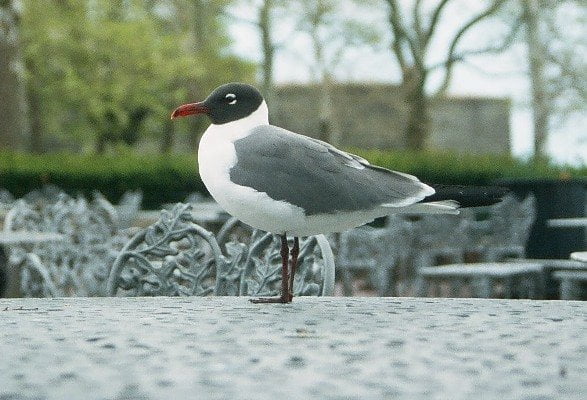
This bird is best referred to as “Aztec Gull” on a visit to Germany if you are serious about conveying your observation to local birders (and you should as it has been seen less than a handful of times there). Yelling “Laughing Gull” may however be more useful if you have found such an ace North American vagrant in Germany but don’t really care if anyone else sees it so long as you get shown a Black-headed Gull. And frankly, this would not be very nice of you.
And one last thing, a final reminder: You may think that all of this doesn’t have anything to do with you or that there is no reason why you should care. However, be aware that wherever you go and whatever you do, there will be a gull watching you …
… and it will likely be Laughing


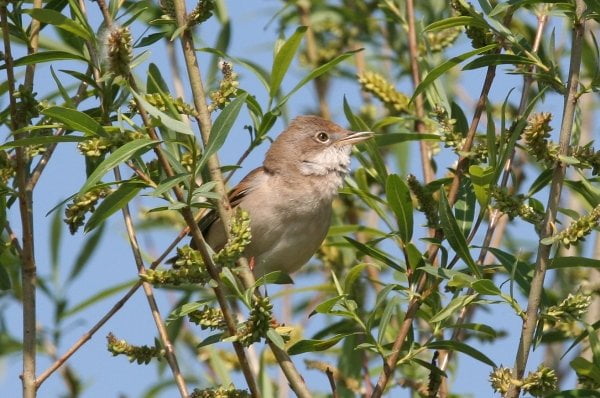
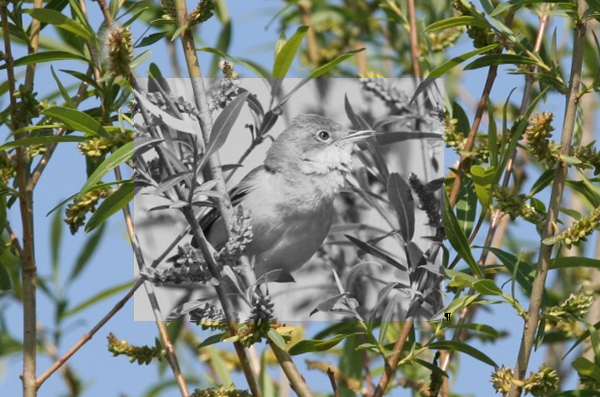
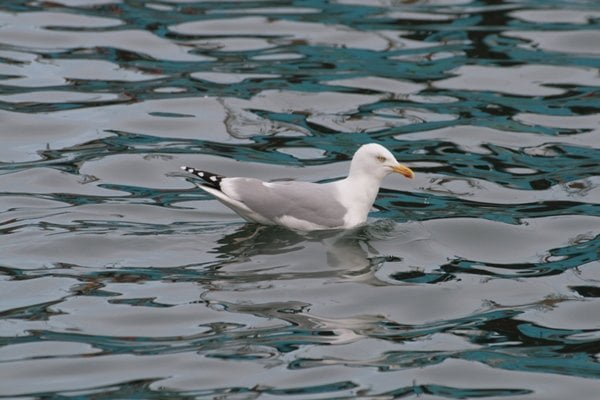
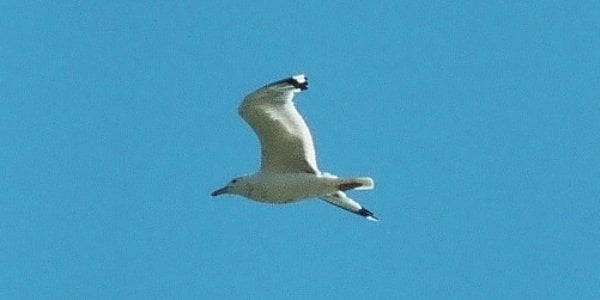
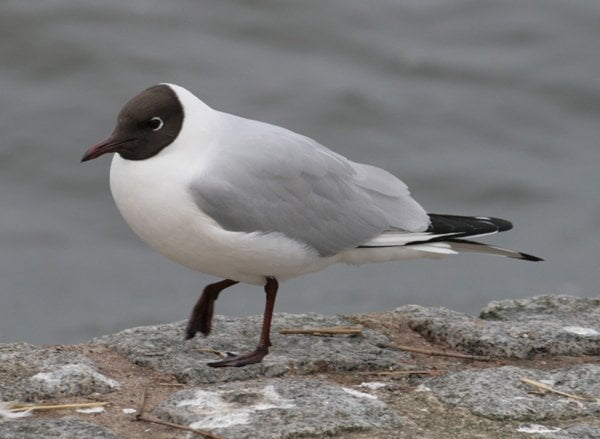
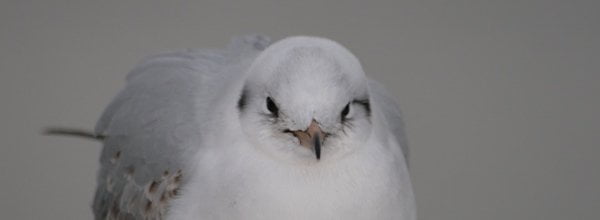











Please excuse me while I go lie down for awhile.
*snickers & giggles*
I just recently stumbled over the fascinating world of Gulls.
English names are just hilarious to me, as you already state in your post (German here).
And I guess with being in the Middle East my eyes must have adjusted to colour.
The photo of the Whitethroat went well with me 😉
Now, back to my own gull nightmares 😉
This is why I like living in Arizona.
I’m dizzy, but know that deep inside, I’ve become a better person for reading this. Thanks, Jochen. I found the English-German gull dictionary particularly enlightening!
Thanks for clarifying all of that gull nomenclature.
@Corey: so gulls do the trick now that you’ve become immune towards Hawfinch and Long-tailed Tit exposure? Good to know, har har…
@Nicole: Hallo, klasse! Eine deutsche Bird Bloggerin! Schick, ich dachte bisher tatsächlich (aus Naivität, nicht Einbildung), ich wäre der einzige. Well, I am glad you still call the world of gulls fascinating. But as you are residing in the Middle East, gulling is outstandingly simple: each and every gull you see is a different species 😉 And I guess living in the MidEast has really enhanced your retina’s resistence towards colour. You have bee-eaters, sunbirds, rollers,… Do I sound jealous? No way! Or wait … I AM jealous!! 🙂
@Rick: frankly, Rick, I am also much more of a sparrow person. The Eagle Owl near Leimen is on its nest. All set, ready to go for May.
@Mike: You will definitely need the English-German gull dictionary for your upcoming trip to Europe. You have one planned, right? I mean, after this post, you must be storming Rochester’s tourist bureaus.
@John: don’t mention it, always glad to hel pand serve. By the way, I can’t comment on your blog anymore because my computer won’t show me the “visual verification”. But I am still there.
Nope, da gibt es noch einige mehr 🙂
Nah, almost every Gull here is a Black-headed Gull.
Fairly easy. But from time to time I snap a shot and at home I think ‘Huh!?’
And there the trouble starts 😉
Actually Egypt trained me better for colours, the birds came to me there. Here I have to go to the birds 😛
Hop on over, migration starts now 🙂
@Nicole. Echt? Kennst du noch mehr? Ich habe auf deinem Blog mal die Links zu anderen Blogs angeschaut, und du bist wirklich in ganz anderen “Kreisen” unterwegs als ich – so viele blogs zu entdecken… Vielleicht sollten wir ein “deutsch-stämmiges Netzwerk” aufbauen 🙂
Oh, are you aware that Grey-headed and Brown-headed Gulls have been seen in Israel and could conceivably turn up anywhere in the MidEast? Better look very thoroughly at those “Laughing” gulls. Hop on over? Sure. Oh wait – work, family, money, geez. Amazing how quickly the best plans can fall apart. 🙂
Gibt’s doch bestimmt auch schon, oder? *Lach*
(Grade mal geguckt und nix gefunden, seltsam :))
Ein link von mir geht zu einer (uh, Deutschen oder Schweizerin?) – guck mal Dreamfalcon wenn Du magst.
Ich bin auch eher selten bei den Deutschen unterwegs, alls so langatmig zu lesen irgendwie 😀
Grey and Brown-headed,… *sigh* – if the weather stays this way all’s just grey anyway 😉
Too bad, but hey, there are always photos 😉
Now I am feeling slightly paranoid and have a desire to avoid beaches and garbage dumps.
Of course, that’s pretty normal for me.
@Nicole: es scheint wirklich nur sehr wenige deutsche Vogelbeobachter zu geben, die bloggen. Und auf deutsch über Deutschland schon gar nicht. Ich denke, wir beide sollten das im Auge behalten. Es gibt viel zu tun … 😉
If all your gulls were Grey-headed, you’d be famous! 🙂 And regarding the visit: I guess I’ll just have to live vicariously through you – so keep blogging! 🙂
@Carrie: …said the lady who forever changed the way I look at potholes.
As a North American birder, I’d recommend still enjoying a relatively manageable gull assemblage while it lasts. Just wait until those European perpetrators have nothing more to split in Eurasia and start tackling the New World.
Och, ob ich unbedingt ein solches Projekt brauche, weiss ich nicht. So ein Netzwerk ist ja doch schon gazn schoen viel Arbeit 🙂
Naja, ein Auge kann man ja mal drauf werfen *platsch*
Nah, don’t wanna be famous – thanks 😉
That’s all I need.
And well, am a bit lazy on the blogging side, need to clean up my Harddrives and that takes tooooooo much work and time 😉
Jochen, you got too much time on your hand! Spend it on coming up with a nice descriptive spreadsheet for my iPhone so when I am traveling I know what I am looking at. But please add the latin name because that fortunately remains the same in both German and English. Then I won’t get confused between my Princeton Guide’s “Birds of Europe”, Howell & Dunn’s “Gulls of the Americas” and my Harrison’s “Seabirds”. As an aside, I have looked for German birding blogs to check on local sightings when traveling to Germany, and found there are none. I guess German birders like to keep those sightings to themselves, or maybe there aren’t any worth blogging about.
@Nicole: einfach suchen und wenn du was findest, link merken/kopieren. So ein richtiges “Netzwerk” braucht’s ja nicht. 🙂
About you being lazy: have you checked my blog beyond the “beach” post? Barely anything post-2009. Wikipedia has a picture of me in the “lazy” article!
@Hilke: the problem with gulls and fieldguides about Europe is (and I am NOT kidding) that the gulls get split so quickly the field guides can’t keep up. And as I mentioned in my post, now even the latin names get changed/messed up.
Blogging is completely unknown in Germany, apparently. It seems the entire concept of running a blog is something birders have never had to deal with. The few German bird watchers who do blog (see Nicole) do so in English and from/about abroad, but I have yet to find a German birder blogging (preferably in English) about their birding adventures in Germany. Birders in Germany do communicate about their observations, but the vast majority do so via listservs that you have to join. The only all-Germany site I know of is http://club300.de , but even this site requires you to join (there is a member fee to keep the service running9, and you get your infos via email or text messages to your phone. The home page only has very rough maps (with red dots) that are accessible without joining. I know of a Bavarian site and a site about bird sightings in Mecklenburg-Vorpommern (will provide links if needed), and there might be more. But overall, the German birding scene really needs to upgrade their online “organization”.
On your next visit to Germany, drop me an email in advance and I’ll try to find out a few details for you.
Cheers, Hilke, and those Bohemian + Cedar Waxwings pictures on your blog … wow!!
I’ll have to check that.
I have a lot of ‘stuff’ but am currently working on too many fronts :S
I’ll keep an eye open for blogs, there should be something …. strange 🙂
I know Lou Salomon and gang have a website for Gull fans, but it’s not a blog, mh,…
Nicole, quite a few German birders have websites where they showcase their bird pics and maybe also a few observations, but a web log is apparently not known in German birding circles.
If you find something, let me know!
Cheers, and greetings to the Grey-headed Gulls! 😉
@ Jochen: thanks for clarifying the gull dilemma. I should have read your post more carefully. Maybe those gull-splitting academics should start collecting DNA samples because I bet once those have been analyzed they’ll find they’ve been all wrong.
What you say about listservs, I just realized, is true in this country too: I am getting all my birding tips from reports on the VT, NH and MA listservs. The blogs are more a way of being part of a community and also of getting more eyeballs, because what’s the sense of a blog if nobody looks at it? So, Jochen, I am glad you looked at and liked my post on the waxwings!
I found one German blog that I included in my blogroll:
http://vogelfotografien2.wordpress.com/
It has beautiful photos. It also has a link to another German blog:
http://www.vogelart.info/blog/
I bookmarked the Club300 site for future reference. I’ll get in touch with you if I need anything more. Cheers!
My head hurts.
I wonder how long until the “Parking Lot Gull” is split off into its own group.
@Will: have you forgotten to drink heavily BEFORE reading the post again? A sober approach to gull taxonomy is bound to result in head-aches! 😉
@Joy: oh, but they have. that’s the notorious PLG – group. I might cover that one in my next post, but suffice to say here that the number of species split shows a strong correlation with the preferred fast food chains used by the local researchers… 🙂
@Hilke: you are always welcome!!
I think I will just delve into “The Shorebird Guide” by Michael O’Brien, Richard Crossley and Kevin Karlson, that I recently purchased. It’s got to be easier to decipher than the gull dilemma.
I’m going to pour myself a drink.
@Larry: ah, I am late, late, late…
As I said to Will, the drink should have been poured BEFORE reading the post, I ought to include a written warning next time I write about gulls. 😉
Well, at least in shorebirds, there seems to be little controversy regarding the number of species involved. although, come to think of it, there is this thing surrounding genetic differences within the Solitary Sandpiper,…
Eeks! I am already struggling with raptor ids, out here, and I dont need this!
I agree, people should not take such a close look!
And I shall also use go lie down now, like Corey!! or maybe make myself a good strong south indian coffee!
@flowergirl: oh, but the Indian subcontinent must get a very fair share of taxonomically completely unresolved gull forms from Siberia and Central Asia, I reckon? And raptors rule, one of my favourite bird groups. Too bad falcons turned out to not really be raptors but some far-away branch of parrots (seriously), but really … who cares? 😉
And enjoy your South Indian coffee, I’ve heard good things about it.
Nice blog, by the way!!
Thankfully the gulls for the most part dont come as far south as I am!! We get terns though.
Thanks the coffee was good today, and I’m glad you stopped by my blog.
I’m still confused … but then gulls have always confused me. At least the Bonaparte’s Gull is fairly easy out here on the west coast of NA. Or is it?
@Flowergirl: oh, terns! now that you remind me, did you know that the genus Sterna got split as well? I really ought to write a post … 😉
@Dave: well, maybe (but just maybe) the post wasn’t meant to seriously clear things up? 😉 And bonies easy? Well, certainly they are, unless you are keen on finding vagrant Little, or Asian Saunder’s or Relic or … I am sorry, Dave, but it’s never easy! 🙂